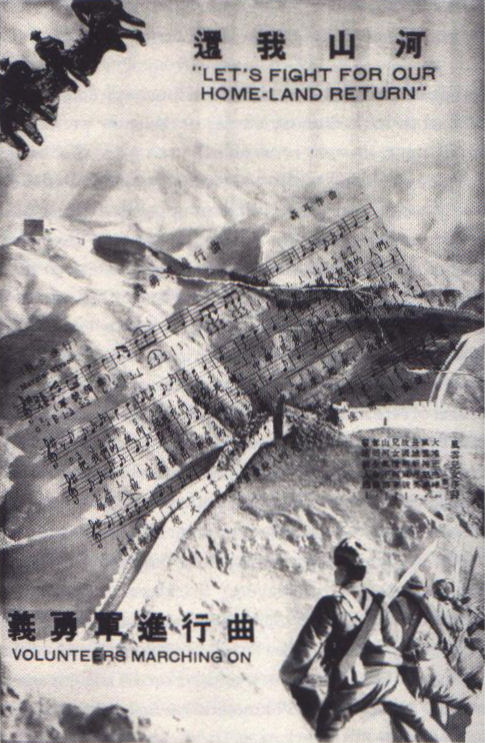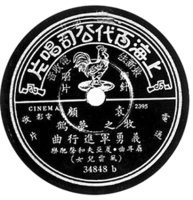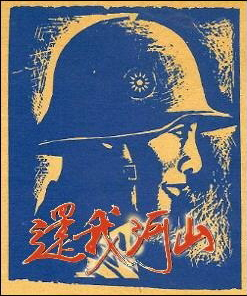China’s National Anthem: A Product of War
- By Peter Harmsen
- 14 November, 2014
- No Comments
 Among the national anthems of this world, China’s is one of the most stirring, and it’s heard increasingly when the country’s athtletes win at international events or its leaders go abroad on state visits. What is perhaps not generally realized is the anthem’s roots in China’s struggle against Japanese imperialism in the 1930s.
Among the national anthems of this world, China’s is one of the most stirring, and it’s heard increasingly when the country’s athtletes win at international events or its leaders go abroad on state visits. What is perhaps not generally realized is the anthem’s roots in China’s struggle against Japanese imperialism in the 1930s.
The closing lines of the lyrics are a clear indication of the origin of the tune:

Original album released in Shanghai
Brave the enemy’s fire, March on!
March on! March on! On!
March of the Volunteers, as it is called, was written in 1934, expressing the thoughts of the left-wing intelligentsia. Rumor, possibly apocryphal, has it that the poet Tian Han penned the text on a scrap of tobacco paper while serving time in a jail run by the Nationalists. It was featured the next year in the movie Sons and Daughters in a Time of Storm, about the anti-Japanese struggle. Although the tune is clearly recognizable, it is nothing like the grandiose rendering that we have become used to today:
It became better known to an international audience in 1944, when Italian-born American director Frank Capra used it in The Battle of China, an instalment in his Why We Fight series of propaganda films, explaining to the US public, weary after nearly three years of war, that it was a necessary sacrifice:
The tune was associated with left-wing politics and not adopted by Nationalist China. It was only after the Communist victory in a civil war in 1949 that it became the national anthem. Today its position is even guaranteed in the Chinese Constitution, and when it is performed now, there is not much to remind us of its relatively humble beginnings as a movie song:



 Copyright © 2025
Copyright © 2025
Leave a Reply